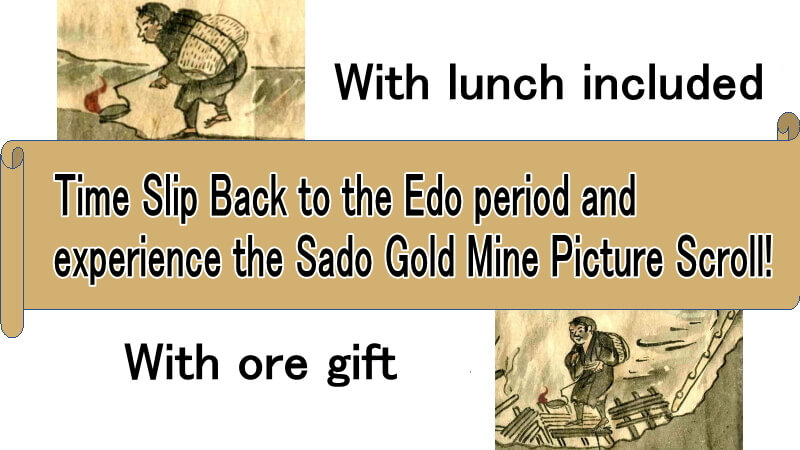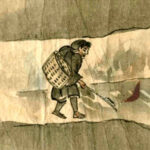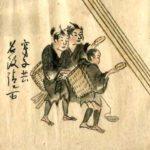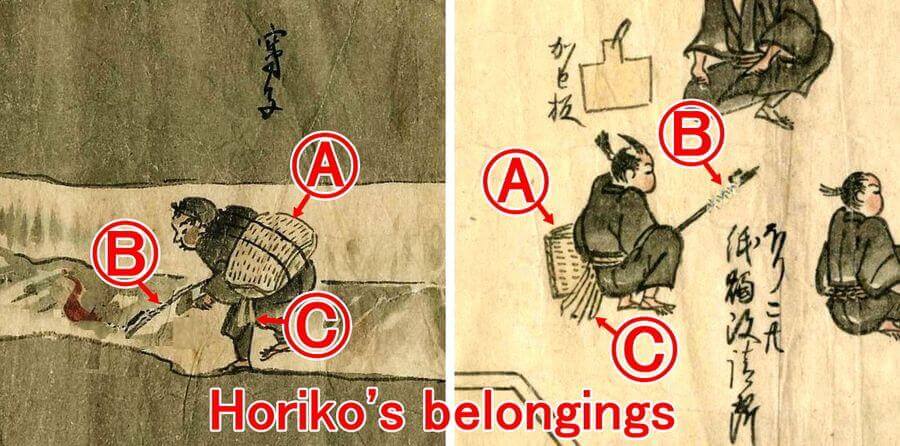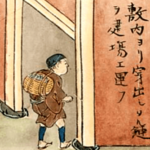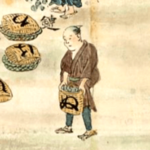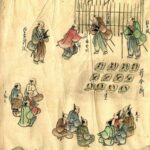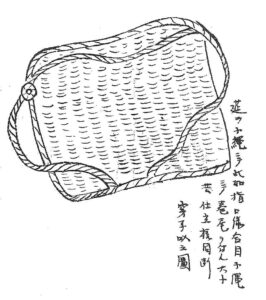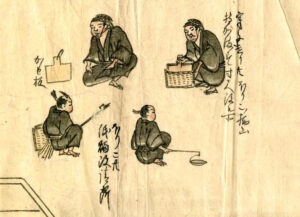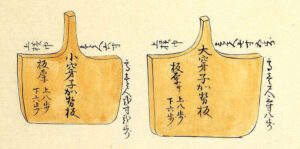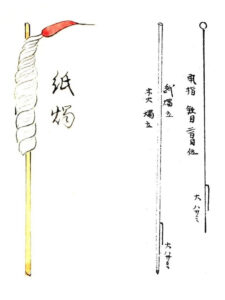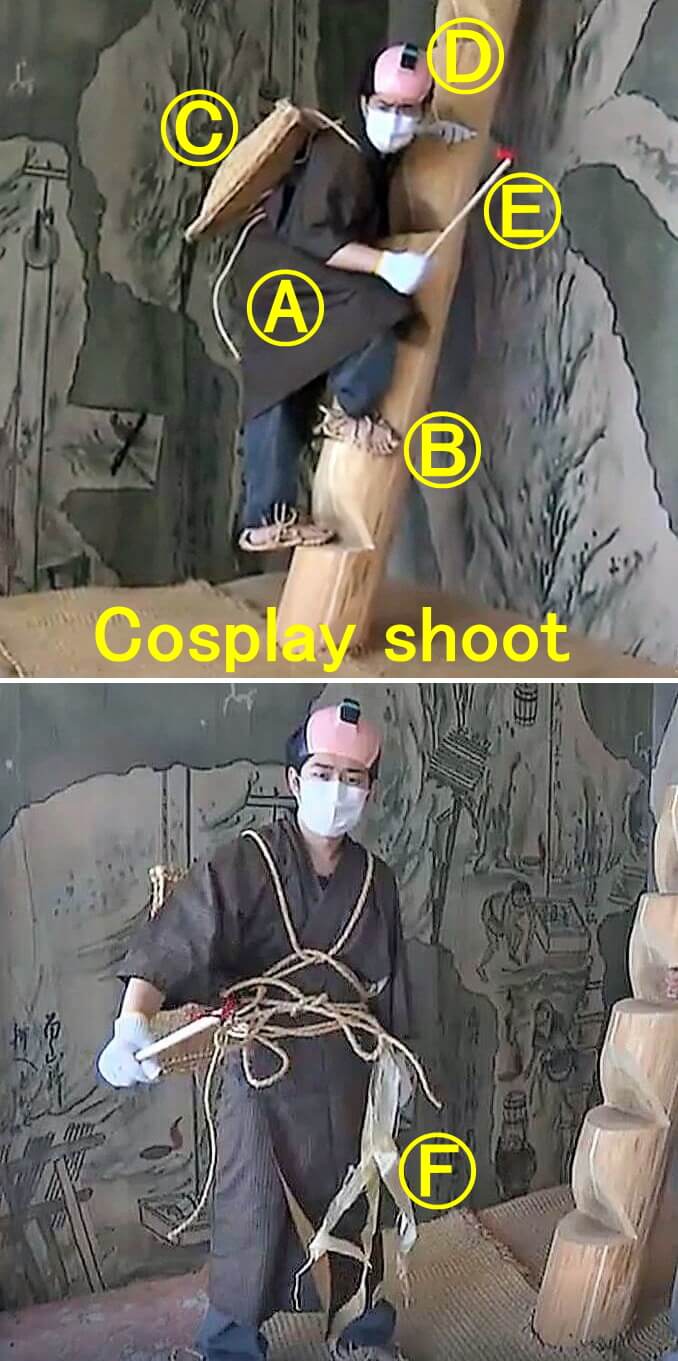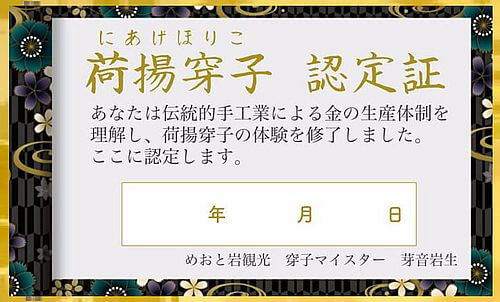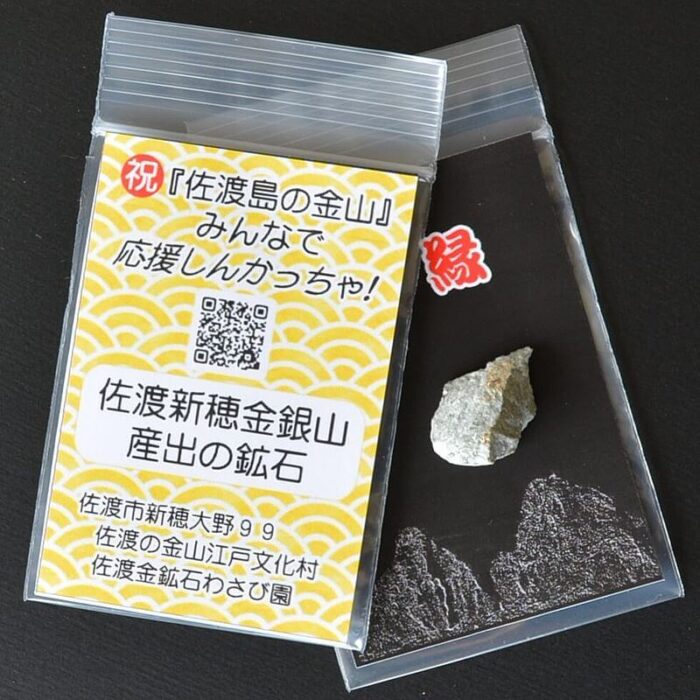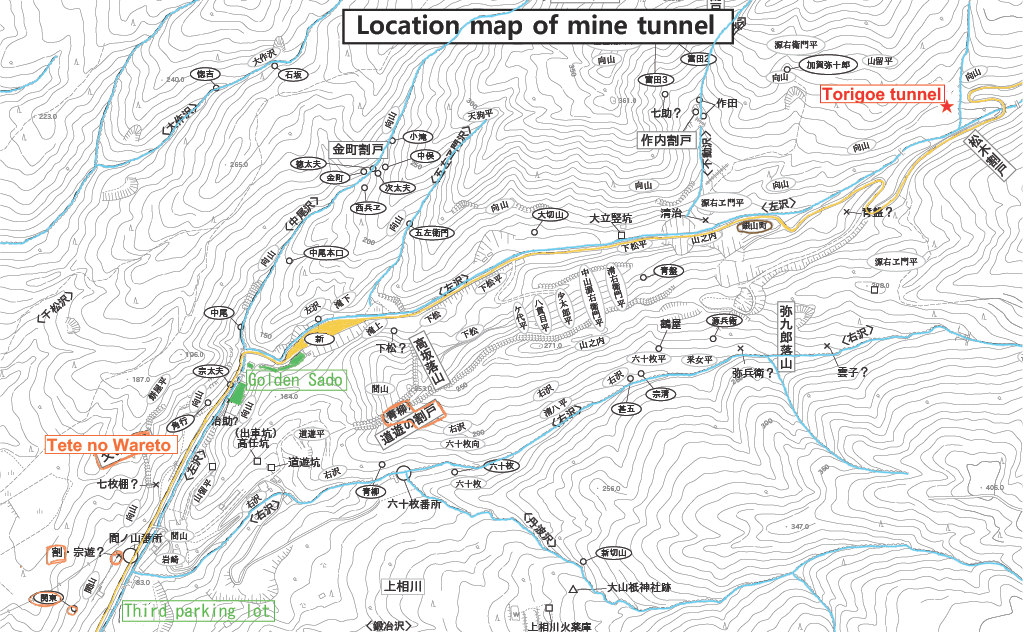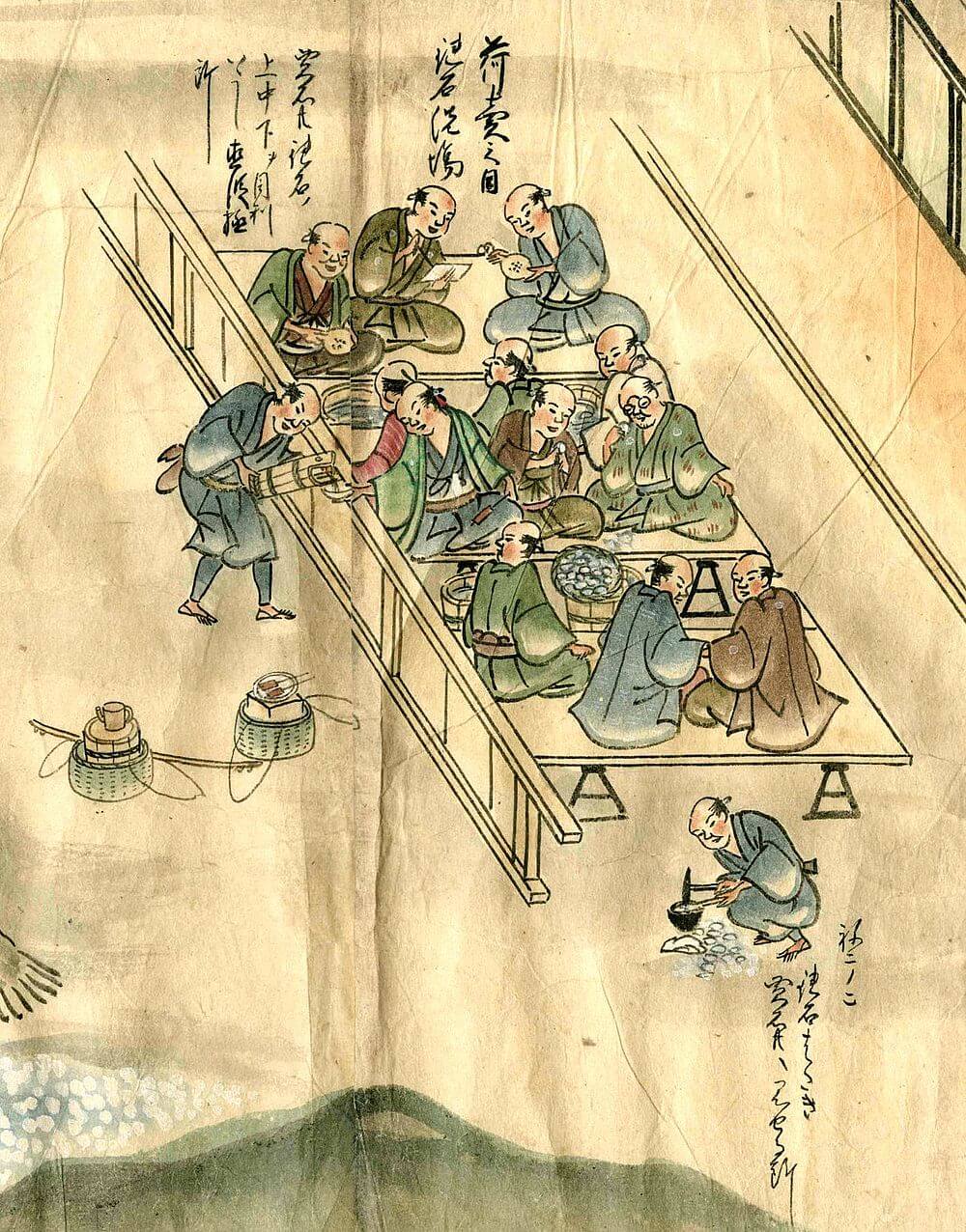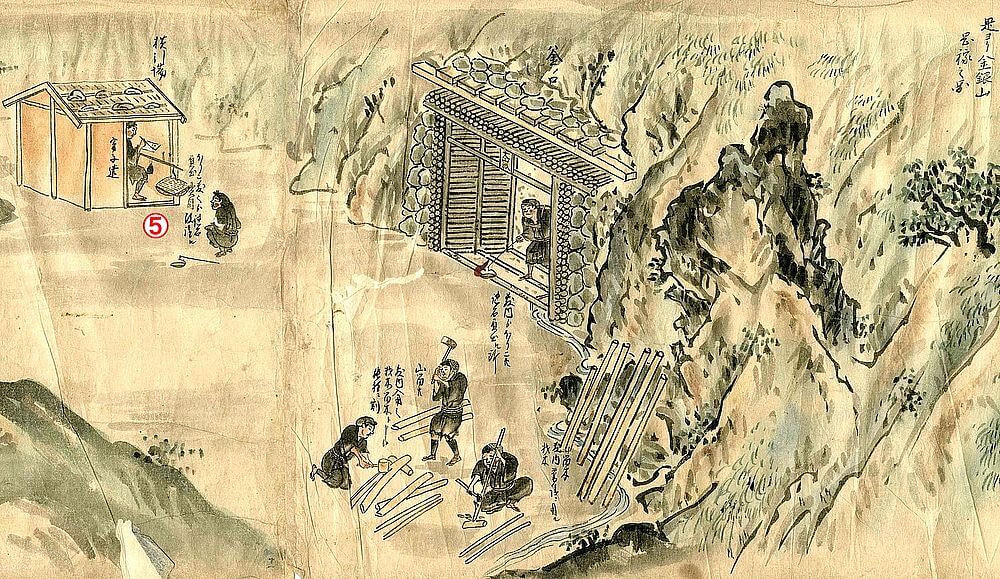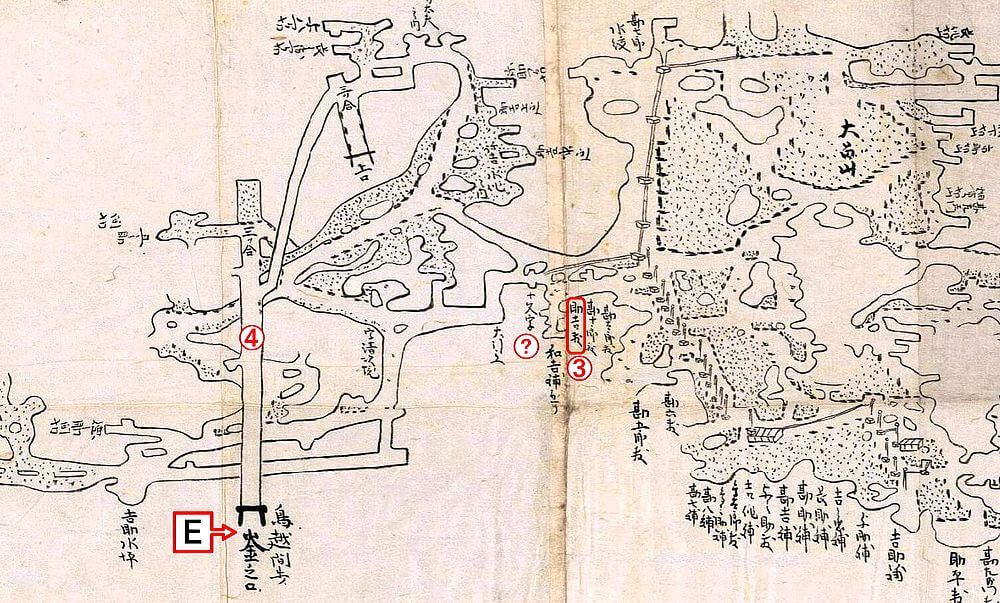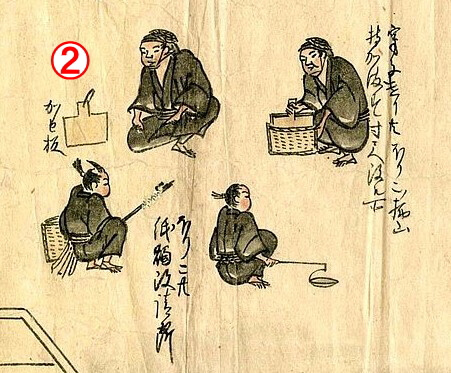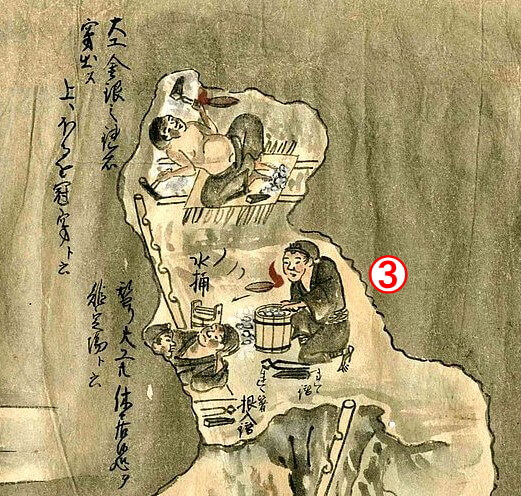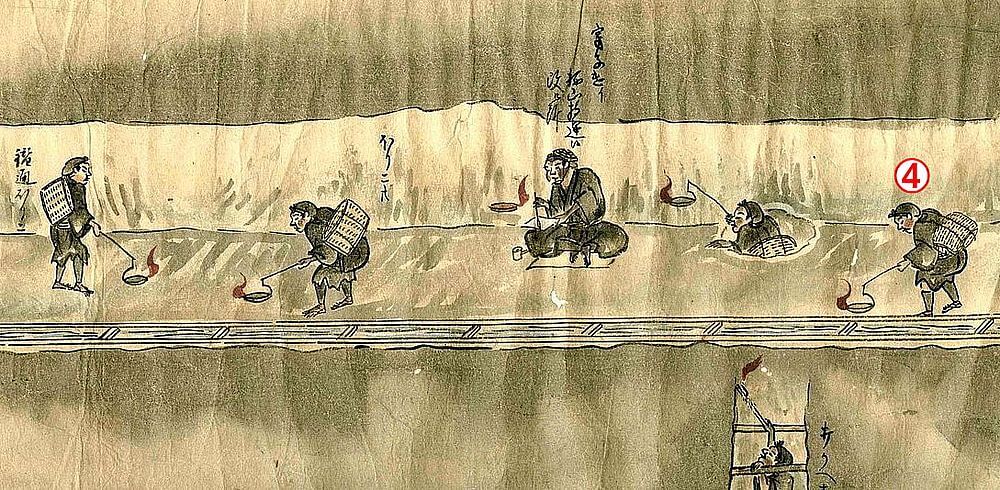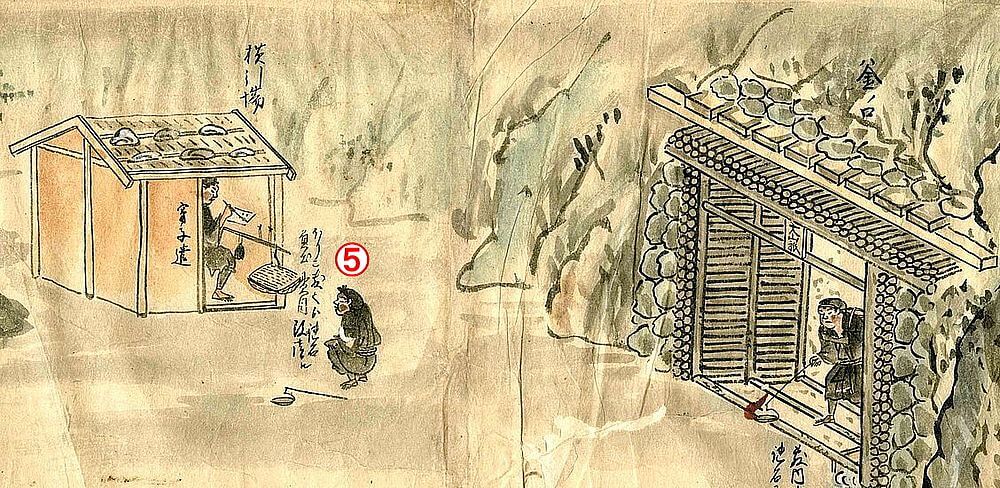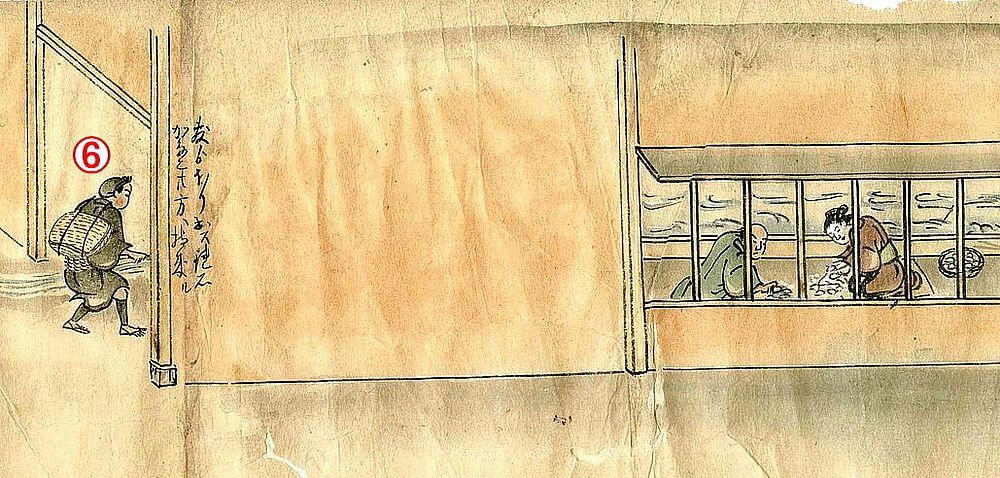Experience the “Horiko-Gokko”
The Sado Gold and Silver Mine Picture Scroll depicts gold production systems and the people who were involved in mining. In this program, you’ll experience the life and work of a gold mine ore carrier, just as it’s depicted in the scroll… And for lunch, enjoy the special “Gen-san Don!”
To start off, we’ll take a look at the picture scroll and learn more about it how miners carried gold and silver ores out of the mine. Then, get ready for work! First, don the gear worn by miners back in the day, including waraji (traditional rice straw sandals) and a kamasu (traditional cloth bag). You’ll find the bag to be a bit heavy – in fact, its exactly the weight of gold that was once carried by the head carpenter, Gen-san. With your ores in tow, challenge the obstacle course simulating a mining tunnel! After completing the course, get ready for a photo shoot! Kimono and chonmage costumes will be provided.
“Horiko,” ?
“Horiko,”
Horiko is a general term for miners, and there were both adult crews and children.
Adult miners were responsible for digging out ores, and child workers carried them out of the mine. This division may be partly due to the fact that it was easier to prevent ores from being stolen by child workers.
The characters “穿子” (Horiko) and “鑚通穿子” (Tagane kayo horiko) can be seen on the picture scroll. Tagane, a chisel, was the tool used for mining ore. Chipping away at rock caused the tagane to dull and shorten. It was the task of tagane kayo horiko to courier the tagane to a blacksmith outside of the mine for repairs.
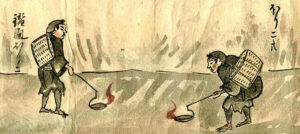
Later, in order to improve efficiency, horiko duties were subdivided into five categories (which differed over the course of the history of the mine), and they came to be called godan horiko (five step horiko) (荷揚穿子: Haulers, 鑚通穿子: Chisel Couriers, 手伝穿子: Pit Assistants, 丁場穿子: Construction Assistants, and 鞴差穿子: Bellow Workers).
Reservation form for Horiko Gokko
Horiko’s belongings
Horiko workers carried a straw bag called a kamasu. Three different types of straw kamasu bags were used during the Edo period – two types of horizontal bags carried by horiko and one type of vertical bag used for sorting.
The size of bag used by Horiko was fixed, and the bags were checked at the Yotsudomebansho (guardhouse) before entering the mines. Kamasu were compared to a plate called a kasei-ita to see that they followed size protocol.
.
Shisokutate was a type of torch used in the mines made by thinly slicing Sado’s atebi tree, soaking it in oil, twisting it into a rope, and affixing it to the end of a stick. A shisokutate-making scene is also depicted in the picture scroll.
Shisoku Donsu, paper candles, were also made by thinly slicing the atebi tree and soaking it in oil.
* In addition, Horiko also carried a rope called a ninawa that secured the kamasu during transportation.
Experience Details
This rice bowl is inspired Only available for this program’s participants,
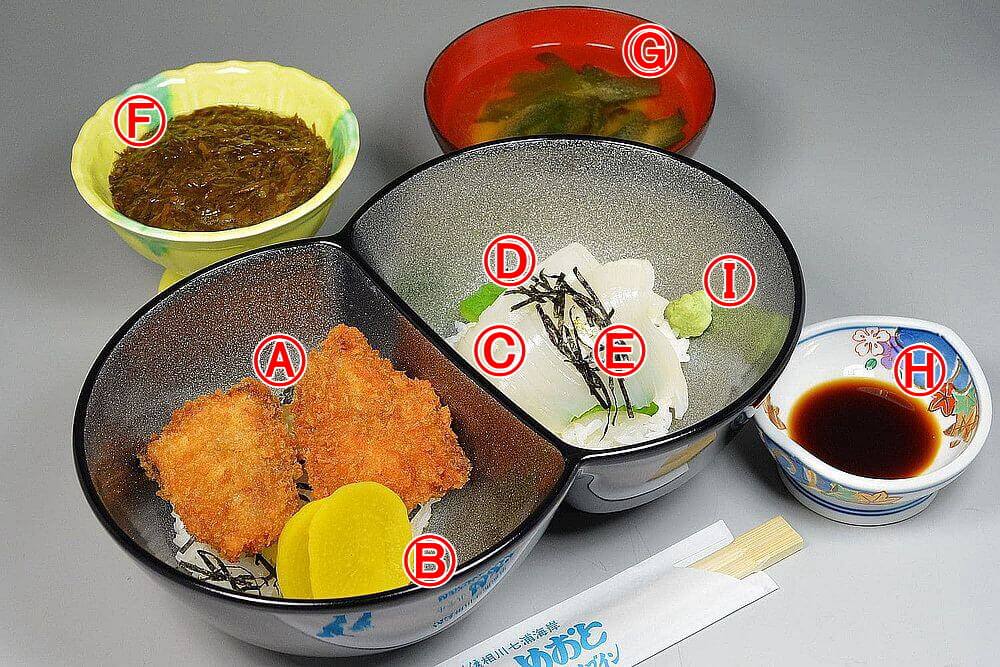
“Gen-san Don.”
A) Sado wild yellowtail cutlet served over rice
The cutlets represent the gold mine open-cut.
B) Takuan (pickled daikon radish)
while the takuan represents koban coins.
C) Squid Sashimi
D) Sliced Nori
E) Gold Leaf
The white squid represents white quartz, while the black nori and gold leaf represent gold veins.
F) Nagamo (Seaweed)
*to be poured over the squid sashimiG) Sado Wakame H) Soy sauce I) Wasabi
Cosplay shoot
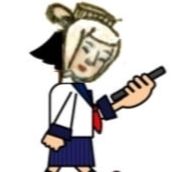
Only for this plan, you can take a cosplay photo of Horiko!
B. Waraji
C. Kamasu (Bag)
D. topknot (vinyl )
E. Shishokutate (Paper Candle Holder)
F. Shishoku Donsu(Thinly shaved wood soaked in oil)
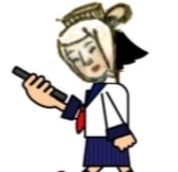
3 old kimonos, 1 pair of woven camas with rope and 1 pair of wig with a 100-yen hairpiece.
We will help you press the button to take a picture with your own smartphone or other device.
Lucky ore souvenirs
Horiko Gokko acceptance calendar
| S | M | T | W | T | F | S |
|---|---|---|---|---|---|---|
1 | 2 | 3 | 4 | 5 | ||
6 | 7 | 8 | 9 | 10 | 11 | 12 |
13 | 14 | 15 | 16 | 17 | 18 | 19 |
20 | 21 | 22 | 23 | 24 | 25 | 26 |
27 | 28 | 29 | 30 | 31 |
| Possible | Unavailable | Unable to select time |
Reservation and Experience Flow
- 3 days agoReservationsReservation deadline is 5:00 p.m. 3 days prior to the experience date.
Email is recommended for reservations.
Reservation form for Horiko Gokko - On the day Step1What to wear for the experienceWe will recreate the tunnels of the time and walk through difficult and narrow areas.
It is made to be difficult to walk on purpose. Please come in clothes that are easy to move in, such as trousers. - On the day Step2What to bringSmartphones are convenient to have.
It is an indispensable item for hearing-impaired people and foreign visitors to Japan who are not proficient in Japanese.You can confirm in writing what you will experience. Our staff who will guide you will also use it as a cheat sheet.
- On the day Step3reception(desk)Reception is possible from 60 minutes before the reservation time.
Please allow plenty of time for your visit. Please inform the store staff of your visit when you arrive. - On the day Step4PaymentPlease pay the experience fee at the reception desk. Various coupons are also available.
(Please contact the staff for details)
You can also use QR code payment (PayPay only) and various credit cards for payment.
(VISA、MasterCard、JCB、AMEX、Diners、DISCOVER、銀嶺) - On the day Step5explanationWe will inform you of the QR code of the experience-only website that has undergone multilingual processing so that you can understand and check the contents of the experience in text and the password for WiFi connection.
You will be asked to download a dedicated page for the experience on your smartphone or other device.
(Download is not required) - On the day Step6Go to the experience areaWe will guide you to the venue when all the participants are ready.
*Participants starting at 12:00 will have the “Gensan-don” lunch first. - On the day Step7GuidanceTo start off, we’ll take a look at the picture scroll and learn more about it how miners carried gold and silver ores out of the mine.
- On the day Step8Challenge the athleticsWearing waraji (straw sandals) and carrying a kamasu(cloth bag), which weighs the same as a gold ore, visitors will challenge themselves in an athletic activity that simulates a mine shaft.
- On the day Step9Cosplay shootWe will provide kimono and chonmage costumes and help you press the button to take pictures.
- On the day Step10Lucky ore souvenirsIf you complete all the missions, you will receive a Horiko Certificate and a lucky ore souvenir.
- On the day Step11Taste the specialty “Gen-san Don.”Only available for this program’s participants, this rice bowl is inspired by the tunnel carpenter depicted on the picture scroll, Genshiro
Torigoe tunnel
With Garmin, the distance between Sado Magistrate’s Office and Torigoe is 3.34 km, with a height difference of 236 m.
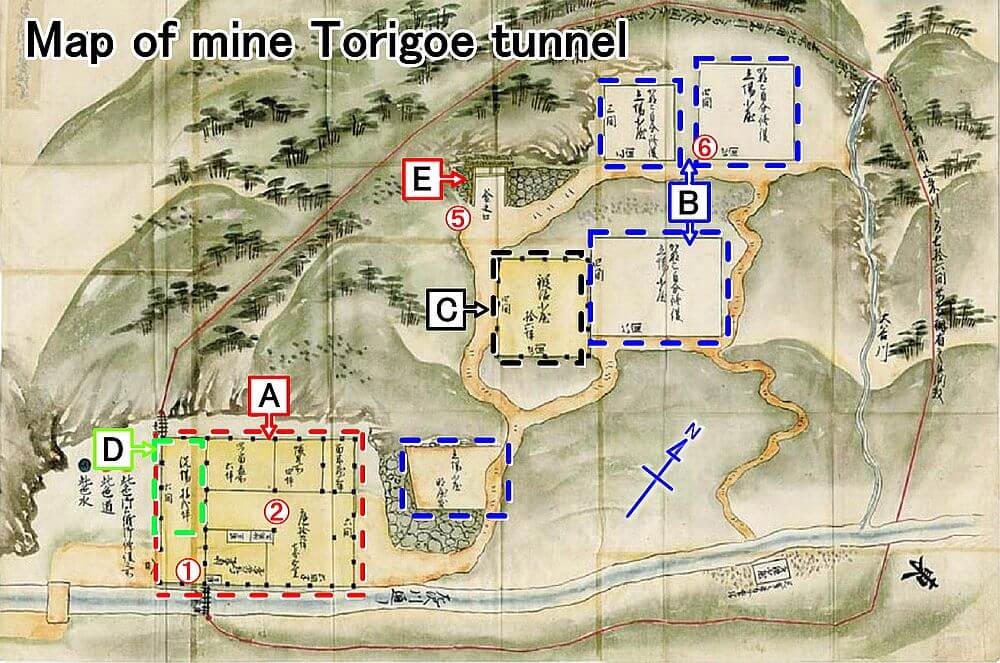
 Managed by the magistrate’s office, this facility monitors the sale of ore at the entrance of the tunnels.
Managed by the magistrate’s office, this facility monitors the sale of ore at the entrance of the tunnels.Horiko were employed by a private staffing agency called Horiko-uke.
You are a Horiko now. Present your ID card to enter the mine.
It is important to check the “kamasu” bag to prevent fraud.
If fraud is found, you will be penalized!
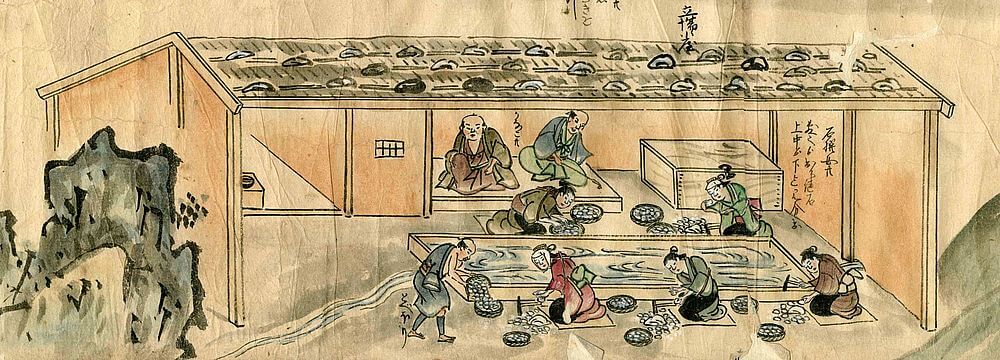 Private mining contractor facility that manages ore mining, ore-sorting operations, and the control station at the exit of the mine
Private mining contractor facility that manages ore mining, ore-sorting operations, and the control station at the exit of the mine Managed by the magistrate’s office, this is the facility where tips of tools used in mining are re-tooled and sharpened after they become dull.
Managed by the magistrate’s office, this is the facility where tips of tools used in mining are re-tooled and sharpened after they become dull.Horiko users’ manual
For administrative reasons, the time for the child-horiko to enter the mine was set at 8:00 in the morning.
- A wooden tag (an ID card as we know it now) with your name on it. I will hand this over to Horiko-uke.
- Kamasu(bag) of the bag to put the ore
- packing cord
- Shishokutate (Paper Candle Holder)
- Shishoku Donsu(paper candles)
About Our Daiku
“Daiku,”
Daiku is the term for artisans who worked in the mine. Kanahori daiku were artisans who dug for ores. Yamadome daiku constructed scaffolding inside the tunnels to prevent collapse. Other daiku shown in the picture scroll are Fuki daiku, Haifuki daiku, Bun Daiku and Nobegane Daiku.
Designation as daiku had important connotations in securing skilled craftsmen for the rapidly developing mining industry. Non-mining related wood-workers were called banjou. (Later, the word daiku was used to describe metal-workers.)
The Story of My First Horiko Job
※ There are English subtitles.
【Prologue】(Story)
It’s the year 1721. This is the story of a fisherman who lived in Aikawa area 300 years ago. One day, the man stopped in town for a drink, where he met the head carpenter of the gold mine Torigoe tunnel, Genshiro. The fisherman hit it off with Gen-san, who suggested that he go to the gold and silver mine to make some extra cash. You see, Gen-san had struck gold, he found a great vein of ore and he wanted someone he trusted to transport the ore out of the mine. The fisherman, encouraged by Gen-san, tries his hand at being an ore carrier…
Make Sado a World Heritage Site!

